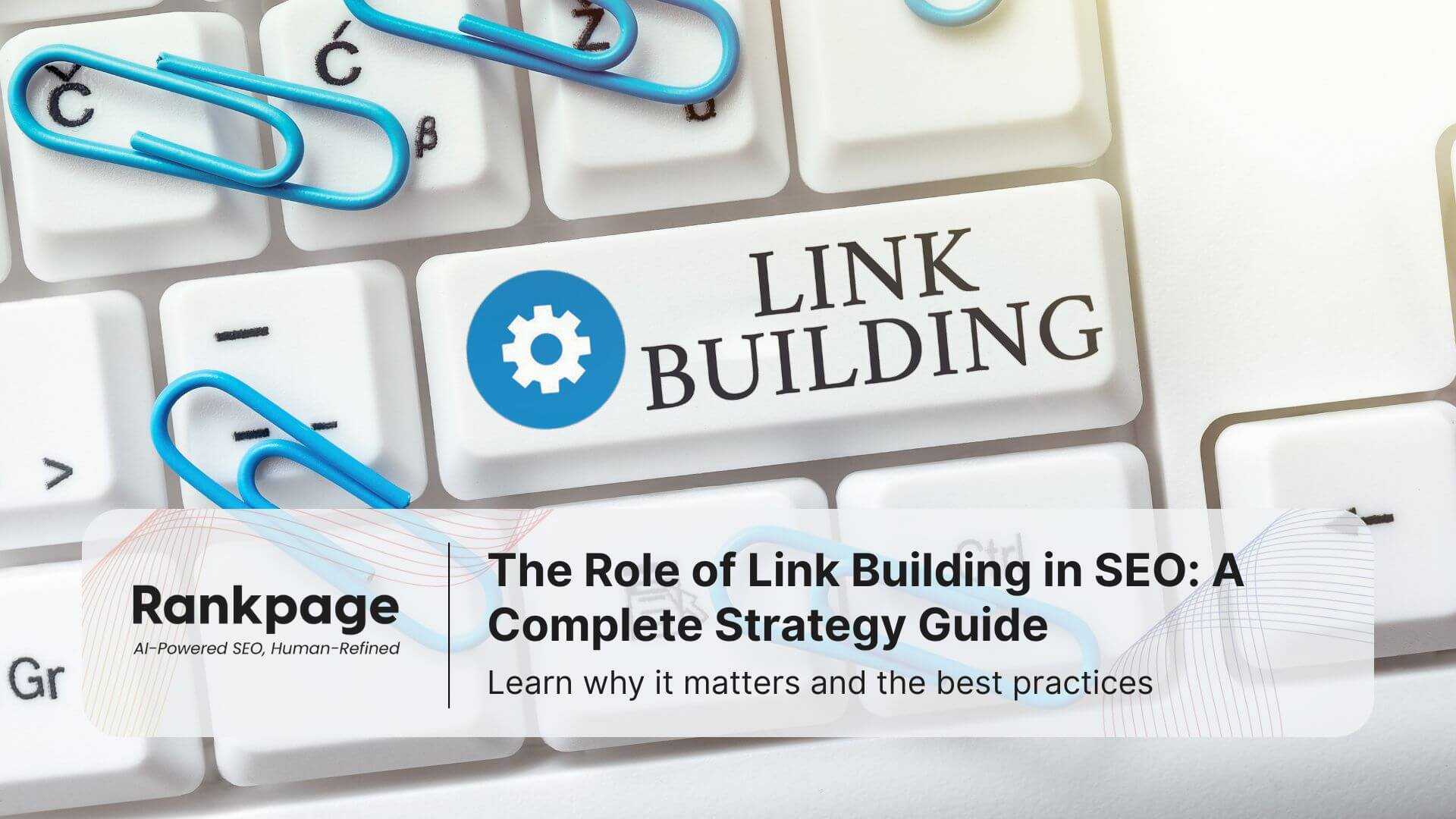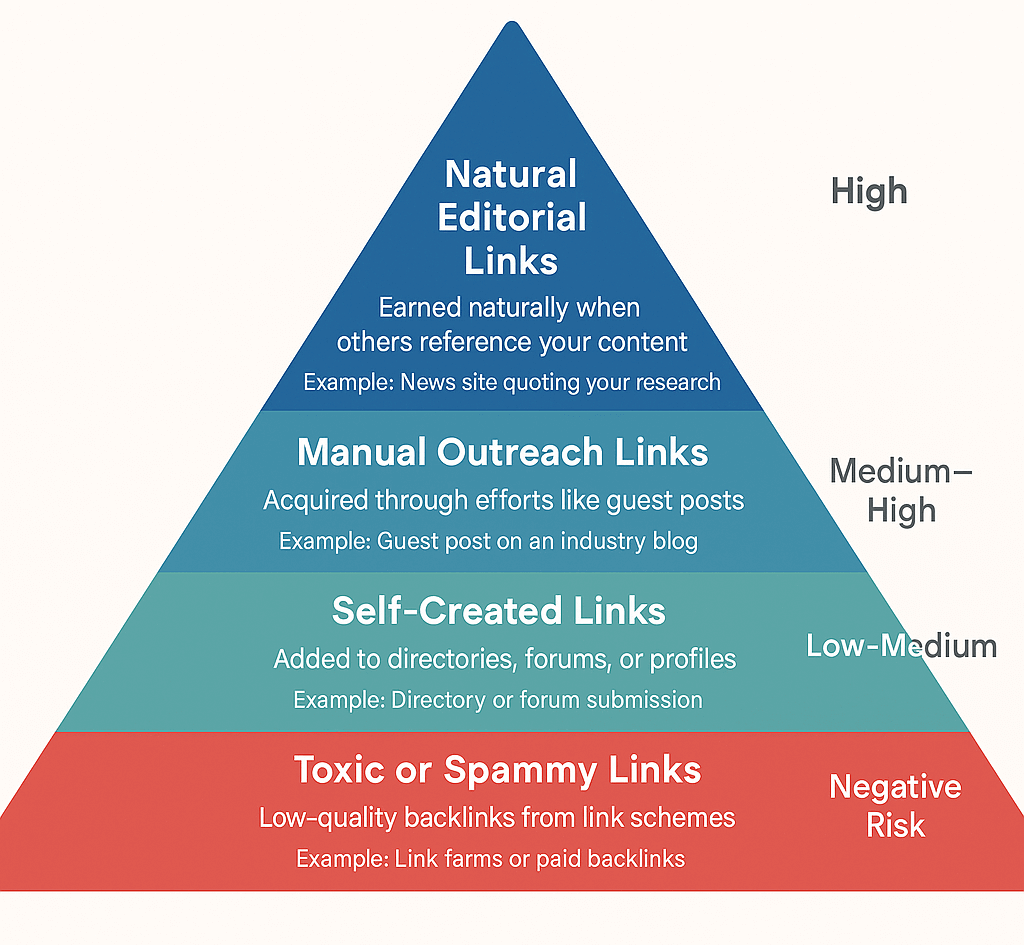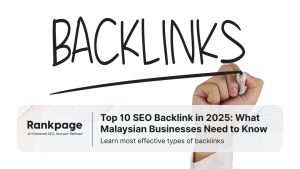Key Takeaways
- Link building in SEO refers to acquiring backlinks from other websites to improve search rankings and authority.
- High-quality backlinks act as votes of confidence, signalling trust and relevance to search engines.
- Effective strategies include guest posting, digital PR, resource link building, and local directory listings.
- Avoid spammy tactics like link farms or paid links, which risk penalties from Google.
- Sustainable link building in 2025 focuses on content quality, authority partnerships, and user trust.
Link building is the process of acquiring hyperlinks from external websites to your own, boosting visibility and search engine rankings.
Search engines like Google treat backlinks as signals of authority. A website with quality inbound links is more likely to rank higher on search engine results pages (SERPs).
For small businesses, working with a trusted SEO agency like Rankpage can make link building safer, more strategic, and sustainable.
Table of Contents
Why Does Link Building Matter for SEO?
Backlinks are still one of Google’s most important ranking signals.
- Boost search authority: Each quality backlink acts like a digital vote of confidence, strengthening your site’s reputation.
- Drive referral traffic: Links bring in new visitors from other websites, not just from Google searches.
- Improve domain authority: A strong link profile helps all pages on your site rank higher, not just individual articles.
- Support long-term growth: Sustainable link building builds trust with search engines, making rankings more resilient to algorithm updates.
Types of Links in SEO
Not all backlinks carry the same weight, quality matters more than quantity.
Natural Editorial Links
- Earned organically when others reference your content because it’s valuable.
- Example: A news site quoting your industry research.
Manual Outreach Links
- Gained through deliberate efforts such as guest posting, partnerships, or influencer collaborations.
- Example: Contributing an article to a niche blog with a backlink to your site.
Self-Created Links
- Added directly by your business in online directories, forums, or profiles.
- Example: Listing your company in Yellow Pages Malaysia or other local directories.
Toxic or Spammy Links (To Avoid)
- Low-quality backlinks from link farms, paid link schemes, or irrelevant sites.
- These can trigger Google penalties and harm your SEO performance.
- Example: Buying hundreds of backlinks from unrelated overseas sites.
Link Type | Example Use Case | Value Level |
Natural Editorial | News site quoting your research | High |
Manual Outreach | Guest post on an industry blog | Medium-High |
Self-Created | Directory or forum submission | Low-Medium |
Toxic/Spammy | Link farms or paid backlinks | Negative Risk |
Best Link Building Strategies for 2025
SEO in 2025 emphasises ethical, sustainable, and relevance-driven link building.
1. Guest Posting on Authority Sites
- Publish valuable, original content on high-authority, niche-relevant websites.
- Focus on insights, case studies, or expert commentary rather than promotional articles.
- Tip: Prioritise sites with strong editorial standards, quality guest posts can drive both backlinks and referral traffic.
2. Digital PR & Media Outreach
- Use press releases, interviews, and media features to earn backlinks from established news sites.
- Position your brand as an expert by offering commentary on industry trends.
- Example: A Malaysian SME gaining coverage in The Edge, Bernama or Press with a backlink.
3. Resource & Guide Link Building
- Create evergreen, in-depth resources such as industry reports, calculators, or infographics.
- Content that solves problems or provides data gets referenced widely.
- Example: “2025 SME Digital Marketing Checklist” cited by business blogs and associations.
4. Local Directories & Citations
- Ensure consistent and accurate business listings in local directories, chambers of commerce, and Google Business Profile.
- These not only build links but also improve local SEO visibility.
- Tip: Include niche directories relevant to your sector like halal certification directories for F&B businesses.
5. Broken Link Building
- Use tools like Ahrefs or Screaming Frog to identify broken outbound links on other sites.
- Reach out to webmasters, suggesting your content as a replacement.
- Benefit: Helps both parties, you gain a backlink, and they fix a dead resource.
6. Partnerships & Collaborations
- Collaborate with associations, universities, charities, or industry partners.
- Co-create research, events, or campaigns that result in natural backlink placements.
- Example: Partnering with a local university for a research study that links back to your site.
Read more: Top 10 SEO Backlink in 2025: What Malaysian Businesses Need to Know
Link Building Mistakes to Avoid
Poor link building practices can damage SEO performance and even trigger Google penalties. Avoid these common mistakes:
Buying links
Paid link schemes may deliver short-term gains but often lead to penalties and a loss of credibility.
Chasing quantity over quality
A handful of links from authoritative, trusted sites is far more valuable than hundreds of low-quality backlinks.
Over-optimising anchor text
Forcing exact-match keywords into every backlink looks unnatural. Use varied, natural phrasing instead.
Ignoring relevance
Backlinks from unrelated industries offer little SEO value and can appear manipulative to search engines.
How to Measure Link Building Success
Tracking the right metrics helps you evaluate whether your link building efforts are effective.
- Domain Authority (DA): Indicates the overall authority and trustworthiness of your site. Higher DA often correlates with better rankings.
- Referral Traffic: Measures visitors who land on your site through backlinks, showing the direct traffic value of your link profile.
- Number of Quality Backlinks: Focus on unique, high-authority domains rather than sheer volume.
- Keyword Ranking Improvements: Track changes in search engine positions for your target keywords to see if link building supports visibility.
Further reading: How long does SEO take to show results
Conclusion: Link Building as a Core SEO Strategy in 2025
Link building remains essential for boosting rankings, visibility, and trust. By focusing on high-quality, relevant, and ethical link building strategies, businesses can achieve sustainable SEO growth.
To maximise results, pair link building with strong content marketing and ongoing optimisation. If you’re ready to strengthen your SEO strategy, consider working with an experienced SEO agency ensuring your business not only earns backlinks but also achieves measurable growth in authority, traffic, and conversions.
Frequently Asked Questions about Link Building in SEO
What is the main purpose of link building in SEO?
To increase search rankings by signalling authority and relevance to search engines.
Are all backlinks equally valuable?
No. Links from high-authority, relevant sites are far more valuable than low-quality or unrelated ones.
Is buying backlinks a good strategy?
No. Paid links can harm rankings and may result in Google penalties.
How long does it take to see results from link building?
Typically 3–6 months, depending on competition, content quality, and link velocity.
What is anchor text in link building?
It’s the clickable text of a hyperlink. Natural, varied anchor text is important for SEO.
Do internal links count as link building?
Internal links help with site structure and SEO but are not considered backlinks. External links carry more ranking weight.






